CCRN-Adult AACN CCRN (Adult) - Direct Care Eligibility Pathway Free Practice Exam Questions (2025 Updated)
Prepare effectively for your AACN CCRN-Adult CCRN (Adult) - Direct Care Eligibility Pathway certification with our extensive collection of free, high-quality practice questions. Each question is designed to mirror the actual exam format and objectives, complete with comprehensive answers and detailed explanations. Our materials are regularly updated for 2025, ensuring you have the most current resources to build confidence and succeed on your first attempt.
There is an increase in catheter-associated urinary tract infections (CAUTIs) following a change in urinary catheter insertion trays. After conducting a literature review of evidence-based practices regarding indwelling catheter insertion and care, the nurse should
A patient presents with fever and chills, is diaphoretic, and reports experiencing abdominal and intermittent left shoulder pain for the past week. An
ultrasound shows an enlarged spleen. Vital signs are:
BP 106/59
HR 118
RR 23
T101.2° F (38.4° C)
When reviewing the lab report, which of the following findings is most significant to this presentation?
A patient who is post repair of an abdominal aortic aneurysm should be monitored for which of the following complications?
Patients in end-stage cardiomyopathy often exhibit which of the following symptoms of right-sided heart failure?
A patient with a spinal cord injury at T7 tells the nurse that they now have a pounding headache. The nurse should
Which of the following intubated patients is most at risk for developing ventilator-associated pneumonia (VAP)?
A patient is receiving continuous enteral feedings via jejunostomy tube. The patient develops mild, intermittent diarrhea. Which of the following actions is most appropriate?
A patient who was admitted after an open aortofemoral bypass for claudication at rest has a hemoglobin A1C of 8.9. The patient admits having poor control of blood glucose levels and is scared to use insulin as directed because of a few episodes of hypoglycemia. Which of the following should the nurse initially request to be consulted?
A patient with history of hypothyroidism is admitted with severe confusion and nonpitting edema. The nurse should anticipate which order?
In a patient with hypertensive crisis, neurologic changes are caused by
A 22-year-old trauma patient sustained multiple fractures after a fall. The patient fell 50 feet from a cliff while rock climbing without a harness. The patient is intubated and sedated with casts to bilateral lower extremities. The nurse should recognize that young adults are
Following a splenectomy, a patient is most at risk for
An older adult patient is admitted with acute exacerbation of congestive heart failure. An echocardiogram indicates that EF is unchanged at 50%. The patient is most likely experiencing
A patient is admitted for hypertensive crisis. As a nurse is starting a peripheral IV, the patient appears increasingly anxious as the catheter is about to be inserted. The patient threatens to harm the nurse if the catheter insertion causes pain. Which of the following is the nurse's best action?
Which of the following is a cause of cardiogenic pulmonary edema?
A patient is admitted for sepsis secondary to pneumonia. The patient has received 2000 mL of plasmalyte and their BP remains 80/50. What should the nurse anticipate next for the patient?
Which of the following is a late finding in hypovolemic shock?
A patient who recently lost their spouse is admitted following an emergent cardiac catheterization. The procedure report states chest pain and ST elevation, no significant coronary artery disease, left ventricular dysfunction with apical ballooning, and an EF of 35%. These findings are consistent for
A patient who experienced a blunt chest trauma in an automobile crash is admitted with multiple rib fractures. The patient is dyspneic and hypotensive and is reporting left shoulder pain. On auscultation, a nurse notes that bowel sounds can be heard over the lower left thorax. These findings are consistent with
Which of the following is a sign of splenic injury and diaphragmatic irritation?
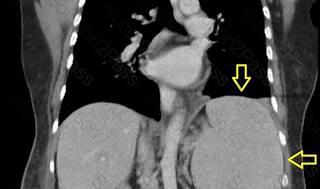 Splenomegaly
Splenomegaly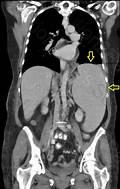 An x-ray of a person's body
Description automatically generated
An x-ray of a person's body
Description automatically generated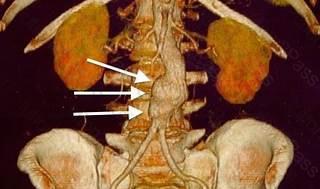 Abdominal aortic aneurysm
Abdominal aortic aneurysm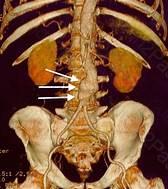 An x-ray of a human body
Description automatically generated
An x-ray of a human body
Description automatically generated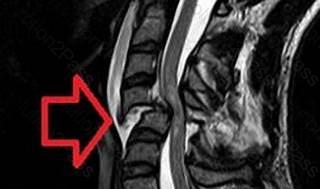 Spinal cord injury
Spinal cord injury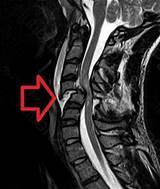 An x-ray of a spine
Description automatically generated
An x-ray of a spine
Description automatically generated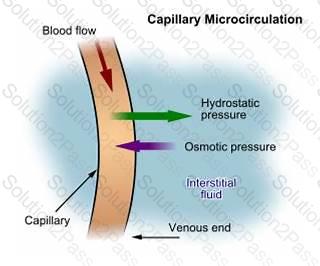 Hypovolemic shock
Hypovolemic shock